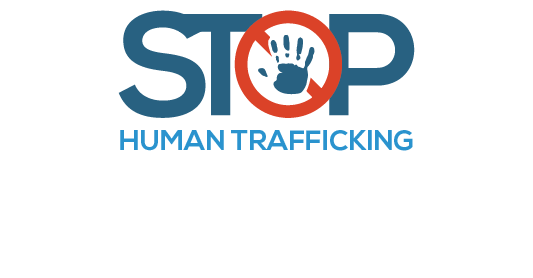Human trafficking is slavery. Typically lumped into labor or sex trafficking, it is defined under both state, federal and international law as the use of force, fraud or coercion to obtain labor or commercial sex from an adult for gain or profit. The burden of proof for force, fraud or coercion are not required to meet the human trafficking standards for minors in either labor or commercial sex trafficking.
It is important to note that trafficking occurs in every state in the United States and involves males and females of all ages. Any and every community, race or nationality may be impacted. Trafficking also does not require movement across a border or line. Unfortunately, it can occur within a home.
Please take a moment to look at the various indicators below. Most people trapped in trafficking will not ask for help on their own. They need others to recognize their situation so they can get the help they need.

Possible risk factors associated with human trafficking include the following:
- lack of personal safety
- isolation
- emotional distress
- homelessness
- poverty
- family dysfunction
- substance abuse
- mental illness
- learning disabilities
- developmental delay
- childhood sexual abuse
- promotion of sexual exploitation by family members or peers
- lack of social support
Possible behavioral indicators of a child sex trafficking victim include, but are not limited to, the following:
- an inability to attend school on a regular basis and/or unexplained absences
- frequently running away from home
- references made to frequent travel to other cities
- bruises or other signs of physical trauma, withdrawn behavior, depression, anxiety, or fear
- lack of control over a personal schedule and/or identification or travel documents
- hunger, malnourishment, or inappropriate dress (based on weather conditions or surroundings)
- signs of drug addiction
- coached or rehearsed responses to questions
- a sudden change in attire, behavior, relationships, or material possessions (e.g., expensive items)
- uncharacteristic promiscuity and/or references to sexual situations or terminology beyond age-specific norms
- a “boyfriend” or “girlfriend” who is noticeably older and/or controlling
- an attempt to conceal scars, tattoos, or bruises
- a sudden change in attention to personal hygiene
- tattoos (a form of branding) displaying the name or moniker of a trafficker, such as “daddy”
- hyperarousal or symptoms of anger, panic, phobia, irritability, hyperactivity, frequent crying, temper tantrums, regressive behavior, and/or clinging behavior
- hyperarousal or symptoms of daydreaming, inability to bond with others, inattention, forgetfulness, and/or shyness
Additional behavioral indicators for labor trafficking include the following:
- being unpaid, paid very little, or paid only through tips
- being employed but not having a school-authorized work permit
- being employed and having a work permit but clearly working outside the permitted hours for students
- owing a large debt and being unable to pay it off
- not being allowed breaks at work or being subjected to excessively long work hours
- being overly concerned with pleasing an employer and/or deferring personal or educational decisions to a boss
- not being in control of his or her own money
- living with an employer or having an employer listed as a student’s caregiver
- a desire to quit a job but not being allowed to do so
